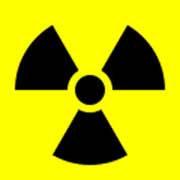
WEDNESDAY, April 3 (HealthDay News) — There were about 4,300 fewer than expected cases of cancer among people in Sacramento County, Calif., in the two decades after the closure of the Rancho Seco nuclear reactor, according to a new study.
The researchers found declines in cancer incidence in 28 of 31 categories, including notable drops in cancer among women, children and Hispanics.
The findings from the first long-term study of the full-population health impacts of the closure of a U.S. nuclear reactor show the need for a full review of the risks posed by low-level radiation, said study authors Joseph Mangano, an epidemiologist and executive director of the Radiation and Public Health Project, and Dr. Janette Sherman, an internist and toxicologist.
Declines in cancer cases among both males and females were seen in Sacramento County after the Rancho Seco nuclear plant closed more than 23 years ago. Because the decline was four times greater among women than men, however, it was deemed statistically significant only for females.
Breast and thyroid cancers were among the four types of cancer that showed a significant decrease among females, according to the study, published online recently in the journal Biomedicine International.
Between 1988 and 1994, the cancer rate among children aged 19 and younger in Sacramento County fell from nearly 18 to about 15 cases per 100,000, a drop of nearly 14 percent. During the same period, the California state rate did not change, the investigators found.
Over the next two five-year periods, the cancer rate among children in the county continued to fall before rising from 2005 to 2009 to a level that was still lower than what is was in the late 1980s, the study authors said in a news release from the Radiation and Public Health Project.
The researchers said their findings are important for the millions of Americans who live around active and idled nuclear plants.
“The impact of reactors should be measured not only in terms of health, but also in terms of cost,” Sherman said in the news release. “For example, the 4,319 fewer cancers than expected in Sacramento County during the first 20 years after the Rancho Seco closure translates into many millions saved in direct medical costs, reduction of productivity lost and additional savings associated with the value of a human life.”
“With large numbers such as these — and with the future of this source of power a matter of great public concern — reports like this one must be followed by ongoing efforts to attain better understanding of potential improvements in public health after reactors are shut down,” Sherman added.
Although the study found an association between the closing of the Rancho Seco nuclear reactor and a long-term decline in cancer incidence in the county, the researchers pointed out that additional research is needed to determine if there is a cause-and-effect relationship.
More information
The American Cancer Society has more about radiation and cancer.

